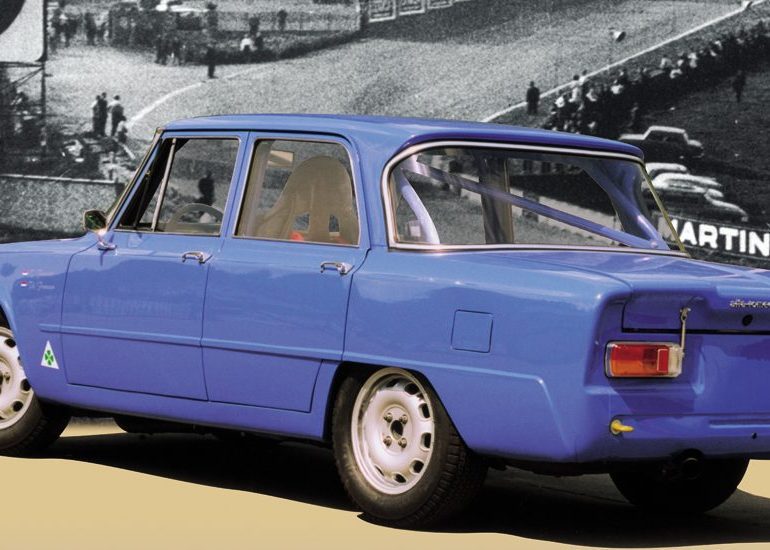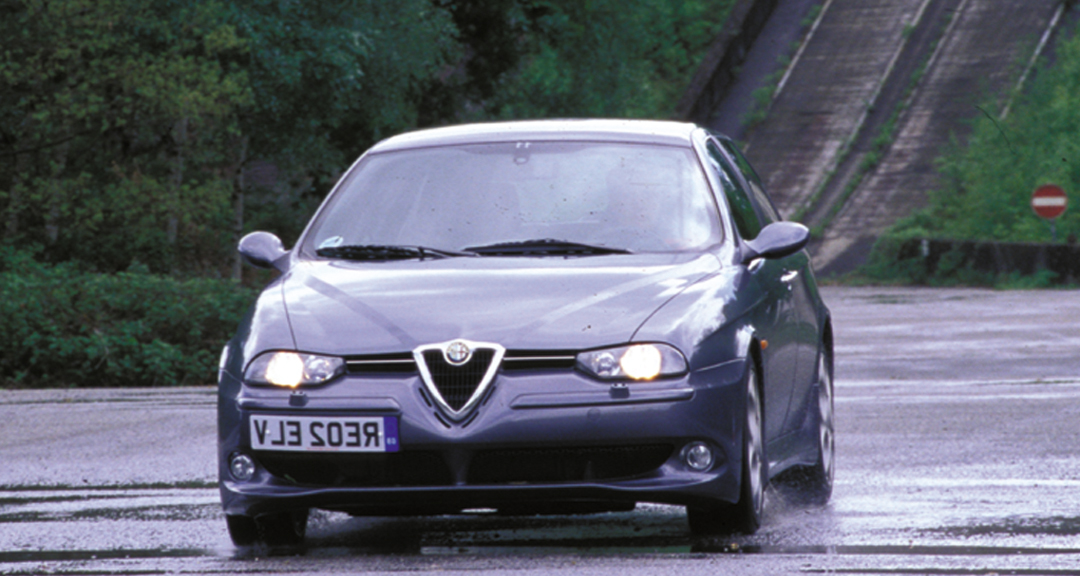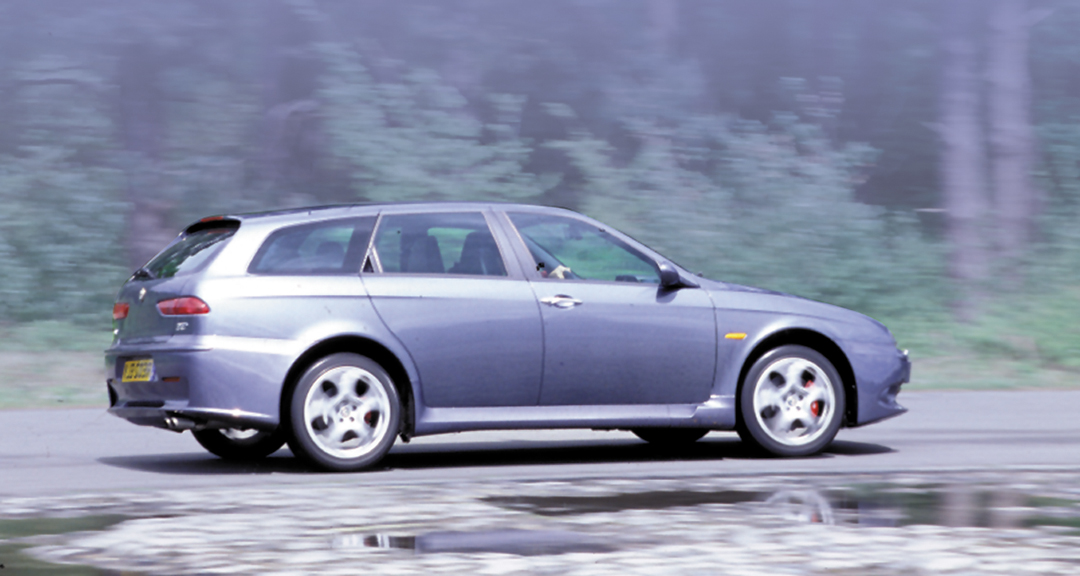1964 ALFA ROMEO GIULIA Ti SUPER
Not too long ago, I had the chance to take part in one of those great, little known events of which you find hundreds in the European racing calender, the 750 Meilen von Nürburgring, a 750-mile event for historic cars at the Nürburgring in Germany. I was fortunate to get to drive a lovely 1966 Alfa Giulia 1300 Ti. We won our class and I was very impressed by the handling and poke of this little car. Two of the three co-drivers, Dutch father and son team Thom and Tommy Fransen, went away and found and restored another racer for this type of event, but this time it was the earlier 1964 Giulia Ti Super. Where the 1300 put out 82 bhp, the road-going 1600-cc version managed 92 bhp, but Alfa’s little Ti Super race version produced an impressive 112 bhp.
Thom and Tommy had their blue bolide at Spa in Belgium recently, having done several races already and testing for the up-coming Spa Six Hour on that daunting road circuit and for the Goodwood Revival. They asked, “Would I like to try it and see how it compares to the later model?” You don’t usually have to ask twice.
Giulia History
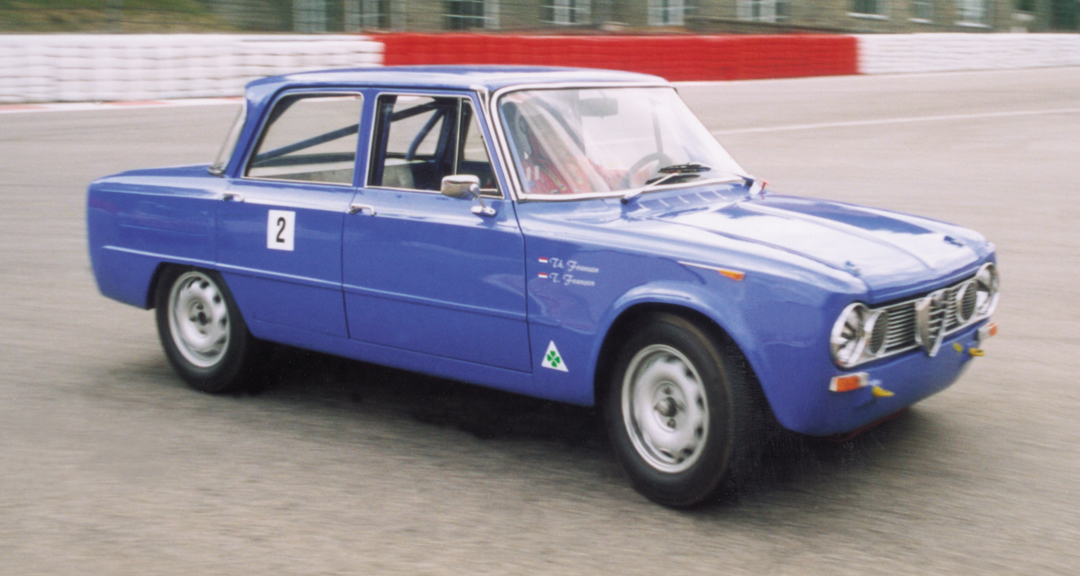
Photo: Peter Collins
Unless you know your late 1950s to mid-1960s Alfas and their line of descent, either get the book out or don’t bother trying – it will hurt your head. In a nutshell, Alfa Romeo had produced some superb small engine touring and sports cars in the 1950s, and many of them raced with considerable success. These started with the various Giulietta models, and when time caught up with them, they were followed by the Giulias – a range that included saloons, spiders and coupes that came equipped with one of four engine sizes (1300 cc, 1600 cc, 1750 cc, and 2000 cc). Making matters more complicated is the fact that there were a number of “sub-variations,” such as diesels, specials (such as the Giulia Sprint Speciale) and even some Giulias that used bodies which had previously appeared on and were identified with the Giuliettas. In addition, these cars were in production from 1962 (starting with the 1.6 Giulia Ti) through to 1977 and the last of the 2000 GTVs. Unfortunately, they also overlapped with Alfettas and the front-wheel drive Alfasud to make matters even more confusing!
Like many other models, Alfa Romeo produced some Giulias especially for competition, bearing in mind the race and rally championships which were going on at the time. The Giulia Ti Super, which first appeared in April 1963, was clearly Alfa’s move to use the successful Ti, but in more serious competition trim. It was a very successful venture on Alfa’s part, though the car has somewhat lost out in historical terms, being eclipsed by the more glamorous GTA coupes and the TZ, which also raced during this same period. But given what it was produced for, the Ti was indeed a potent machine; and unlike some of its flashier siblings, reasonable numbers of the somewhat boxy saloon have survived and form the basis of a very active historic racing contingent. While some of the Ti Supers went to the U.S., most of those now racing had European histories, especially in Holland, France and Belgium, as well as Italy.
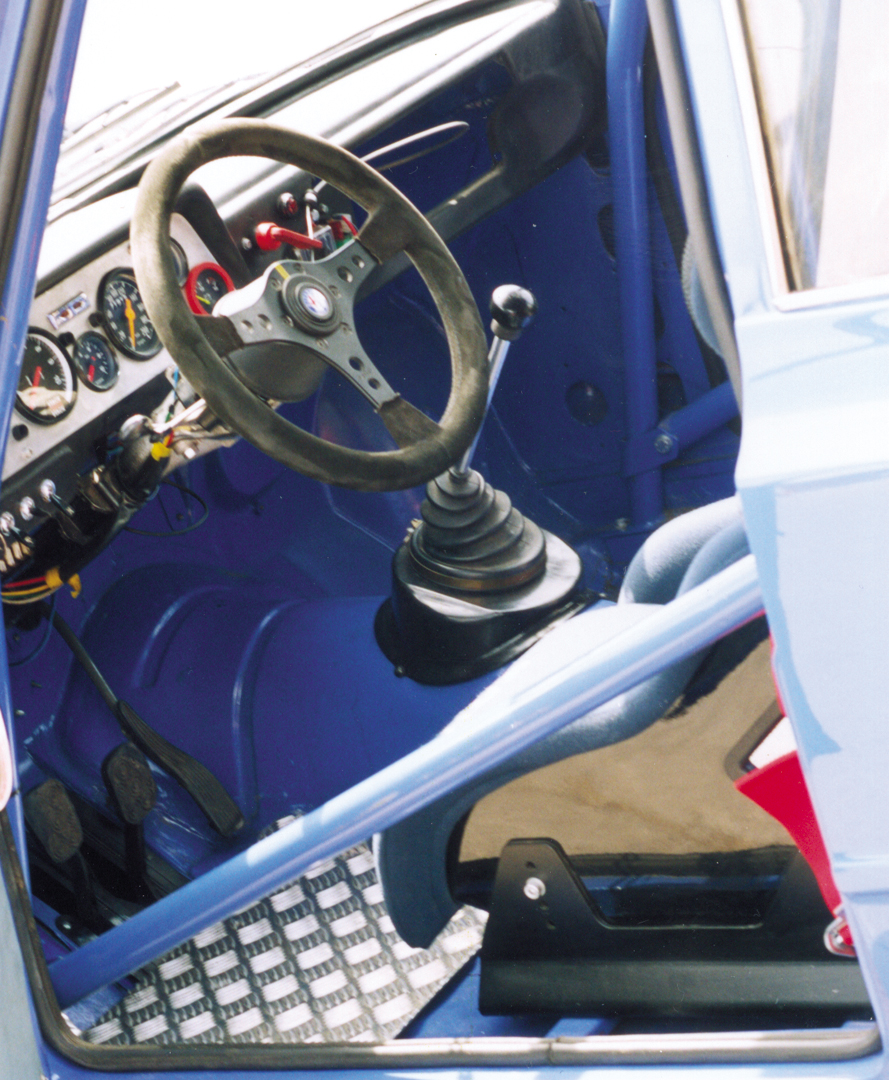
Photo: Peter Collins
Upon its launch in 1963, there was no pretence that the Giulia Ti Super was anything but competition-oriented, though many examples did become road cars! The aim of the Ti Super was to reduce the weight of the ordinary Ti and significantly upgrade the mechanical specs. In their book describing these cars, D’Amico and Tabucchi (1996) were clear that the Ti Super was born to the task of “upholding the reputation of the marque, mainly in the hands of private entrants, in the Italian and European championships for the Turismo category.” This was to include both racing and rallying, and as 1000 examples had to be produced for homologation, “all were to be identical, or at least all the material used in their production was to be identical.” This meant, of course, that they were not identical…or some were more identical than others!
The engine performance for the Super was significantly enhanced by using the same specifications as the somewhat “hotted-up” Giulia SS version, but with the substitution of twin Weber 45 DCOE14 carburetors, rather than the smaller ones on the SS. These carbs had, by this point, been developed to a fine state of tune through Weber’s close association with Alfa Romeo. The twin choke versions were bigger than those on the earlier Giulietta and were shared in common with the TZ and the GTA; they were preferred as the engines had reached a high level of general performance. Rounding out the improved package there was now an electric fuel pump, and the competition exhaust from the SS was used (a unit that was tried and tested over many years and had originated on the 1950s 1900.) The gear change was floor-mounted; lightweight Campagnolo wheels were deployed; lighter leather-covered bucket seats were used; and importantly, four-wheel disc brakes found their way onto the Ti Super.
As had become Alfa tradition, there were no major styling differences between the Ti and the Ti Super except that the Super was somewhat lower and two steel mesh grills replaced the inner lights at the front on most, though not all, models. These were used to channel cool air to the carbs on one side and to the exhaust manifold on the other.
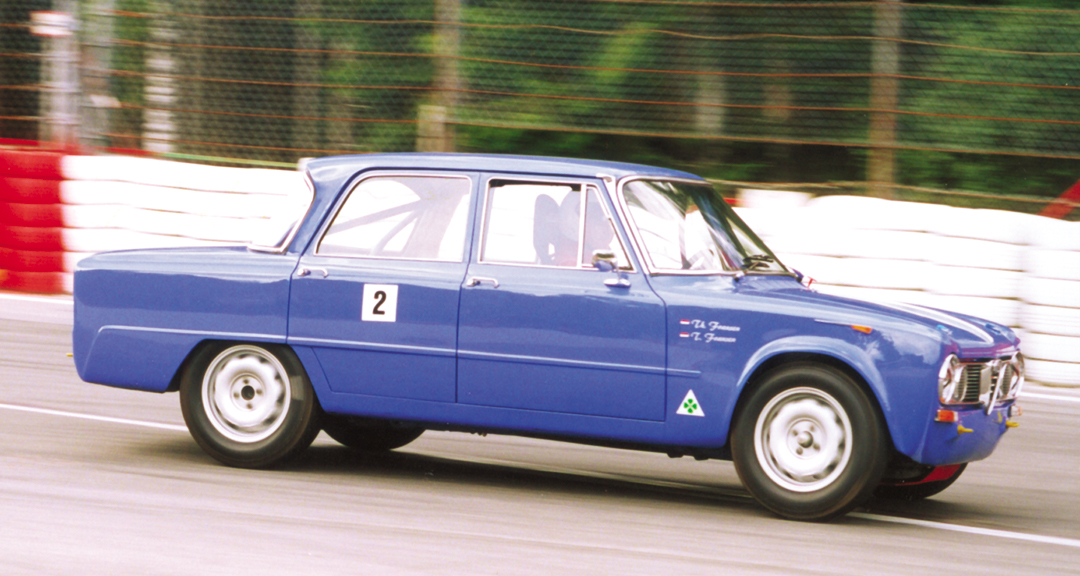
Competition History
Timing, as some wise sage said once, is everything.
Just as the Giulia Ti had been born, life in general (and Enzo Ferrari in particular), had combined to push one Carlo Chiti away from Ferrari. Chiti first devoted his post-Ferrari time to developing and campaigning the ATS F1 car before making the move to Alfa Romeo. Chiti’s first work with Alfa was in Udine where the Chizzola brothers’ Alfa tuning firm, Delta Auto, soon fell very much under Chiti and Alfa’s influence. Soon, under Chiti’s guidance, the shop became known as Autodelta and moved to Settimo Milanese. There is speculation that the GTA was on the drawing board in these very early days, but whether or not that is true, the Giulia Ti Super went to Autodelta for development, and became a useful part of the process, which later resulted in the GTA. The technology which was being evolved for the serious TZ racing program was certainly part of what influenced the more docile -looking little saloon car, as well. The first ‘Delta Auto’ prepared cars were turning out 160 bhp in an attempt to fight with the Lotus Cortinas of the day and by 1966 were seeing 170 bhp; but their height and bulk always saw them at a disadvantage—130 mph was easily obtainable and early testing proved the handling to be superb. This feature makes the Ti Super, even today, an enormous pleasure to drive at high speeds. The “flingability” was always an important characteristic.
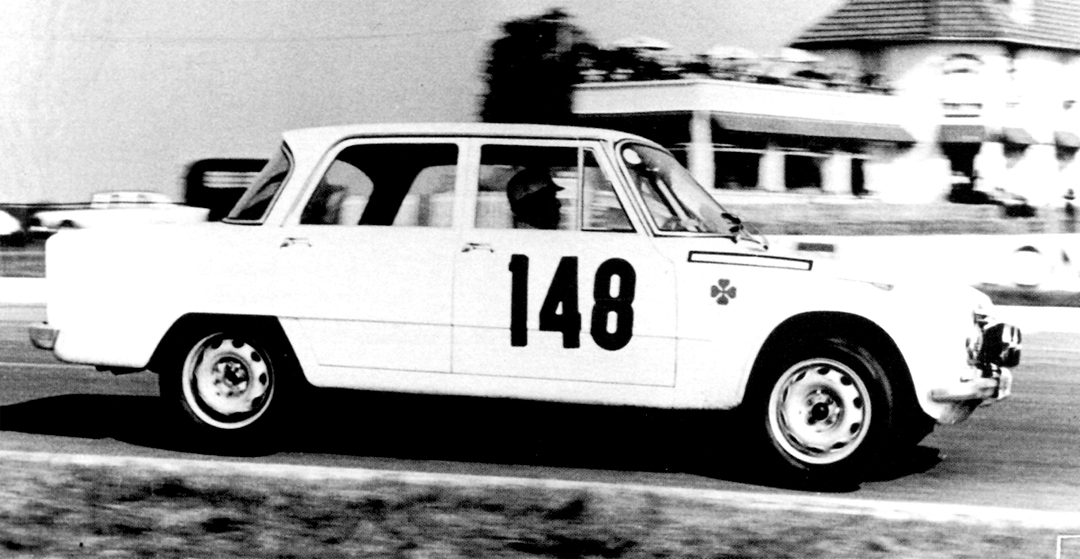
It wasn’t long after the initial launch that the car started to appear in trials and hillclimbs, and notably at the 1963 Nürburgring 1000-Kms in the hands of long-time Alfa racer Carlo Facetti. Soon the car started to appear regularly well up the 1600 cc class results in long distance races. Early success meant sales to privateers were brisk from the start, and the many tuning firms quickly got into the act with improvements. By the end of the year, the car was winning its class in major Italian and European events. The Ti Super also took its class in the prestigious Tour de France in its very first season, while at the same time, the first cars had found their way to the USA where Harry Theodoracopulas was attempting to challenge the Cortinas and other high-bred Euro-cars with his Ti Supers.
Rounds of the European Rally Championship fell to the Ti Super, and these were outright wins, not just class victories. In early 1964, the class win at the Monte Carlo Rally went to the car, and then Andrea de Adamich won the Portuguese Rally outright. This was a real boost to the car, as well as to de Adamich who went on to become a regular Alfa sports car pilot and even sampled the heights of F1. However, Autodelta made the decision at this point to concentrate their rallying efforts on the TZ, which cost the Ti Super a serious chance of winning the championship.
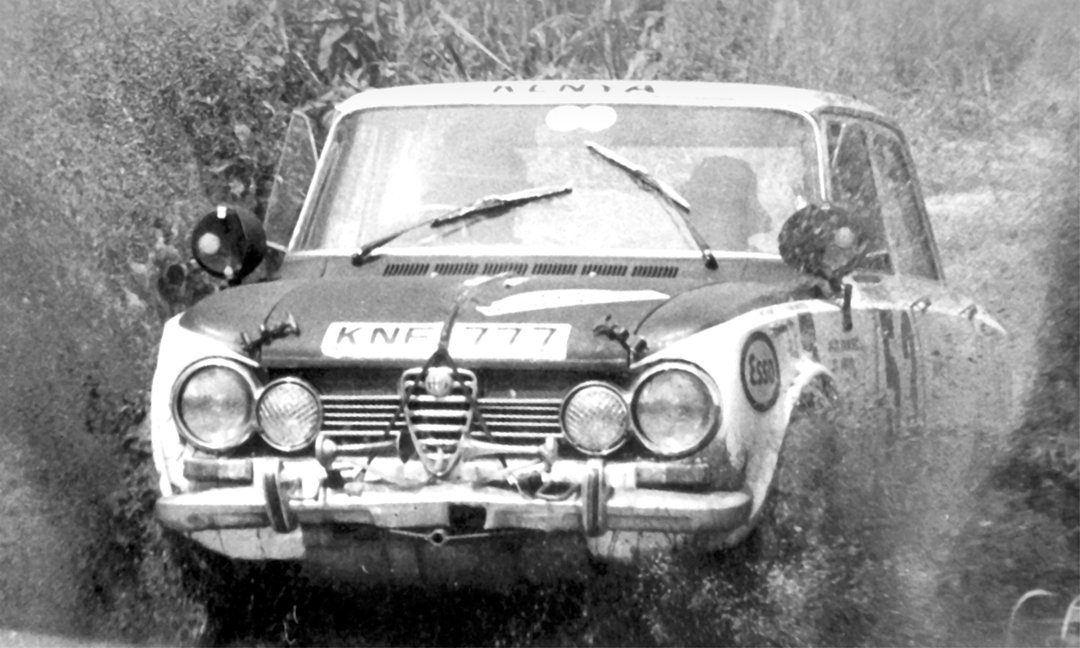
Photo: McDonough Collection
According to noted expert Chris Savill, “It was as a racing saloon that the Ti Super is best remembered. Indeed it was homologated at just the right time, for the European Touring Car ‘Challenge’ was becoming increasingly prestigious and media worthy….the white Autodelta prepared Ti Supers were entrusted to Roberto Angiolini’s Jolly Club of Milan….on the tighter circuits the Whitmore and Taylor Lotus Cortinas outran the Ti Supers.” However, at Monza de Adamich won the Carri Cup outright, with better top end speed than the Cortinas, and other end of season races went to Giancarlo Baghetti and Gino Munaron.
1965 saw important Monza wins for de Adamich and Roberto Businello, aided by Ernest Prinoth – little known characters to many – but all got Grand Prix rides of one sort or another. Other wins followed in the European Mountain Championship as well, and as the switch to supporting the GTA came from Autodelta, the Lotus Cortinas won the European Touring Car Championship with Sir John Whitmore taking the driver’s title. Rally successes continued, and wins also came from Australia and South America on into 1966, but by then the game had changed and coupes had replaced saloons to a great extent.
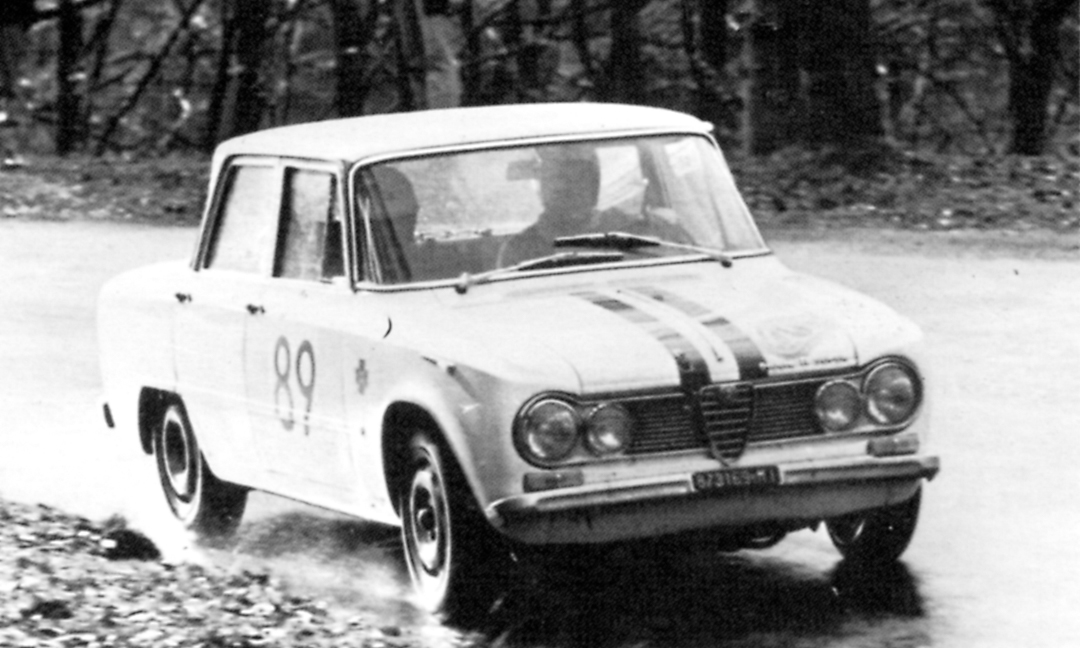
Driving the Giulia Ti Super
This particular car was sold to its original owner in Italy in 1964 but was soon being used for club racing and hillclimbs while it served as the owner’s everyday car, commuting around Rome! It lived the life of the true “homologation special” – a racecar that could just about be used on the road. Though it did not take part in major championships, it ran in a number of touring car events in the period. At the end of the 1960s and in the early 1970s, it changed hands several times and became somewhat neglected. The original engine was separated from the car sometime during this period. In 1983, it was sold to a Dutch enthusiast who probably didn’t know what he had. He began a restoration, which was abandoned after much body filler was added. Tommy Fransen, who had raced in the Dutch club scene from 1964 until 1970 and again from 1984 to 1993 in a 1300 GTA Junior, started looking for something he could race with his son. After hearing about this car, he bought it believing the bodywork to be in a sound state. On investigation, it required a bare metal re-build which started in 1997 and first appeared at the Nürburgring in 2000. Subsequently, it has done the Monza Coppa Europa and the Dijon 3-Hours, where it was 2nd in class in 2001 and 3rd in 2002
The car now produces some 165-170 bhp, with an increase in bottom-end torque evident. The engine has lightened components and has been balanced, meeting FIA Appendix K regulations, and in a state of tune suitable for endurance racing, which was why it was bought by the Fransen team in the first place. Thom Fransen described the handling as being very neutral, which I was about to find to be the case, but only when the tires had been warmed up! While many Giulias are somewhat prone to oversteer, this one is, in fact, quite neutral and easy to control with the throttle. I was assured it’s a pleasure in the rain, as opposed to my experience at the Ring in the 1300 where I barely managed to keep it on the road lap after lap for 90 minutes! Today, however, was bright and sunny.
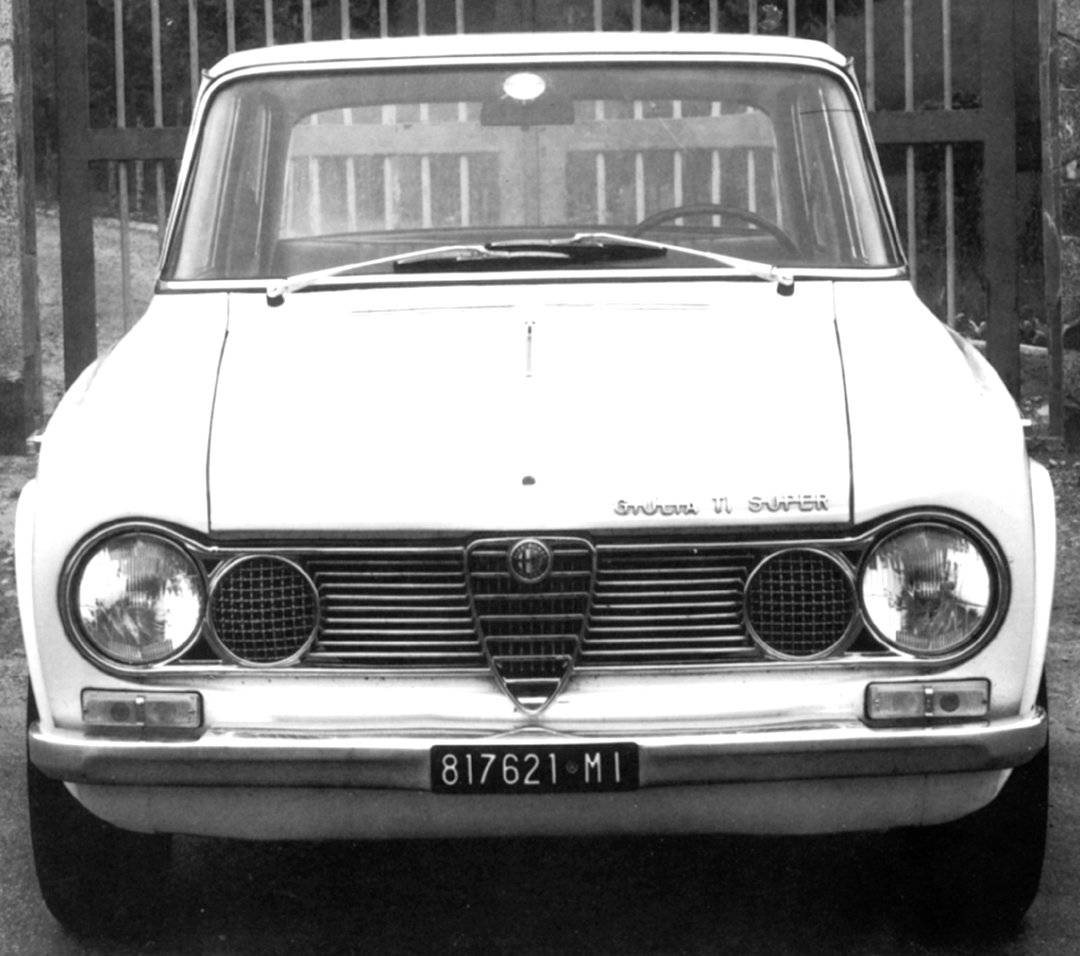
Photo: Alfa Romeo Archive
I was cautioned to get the endurance spec brake pads up to temperature before really expecting them to work, as well as to get some heat into the tires, but overall, I didn’t expect this car to be significantly different from the smaller engined car. It, however, was.
At 835 kilograms, the car is light relative to its power, thanks to alloy body panels and despite a whopping 78-liter fuel tank! But the first big impression comes from the noise, the competition exhaust blasting out far more sound than you might expect from a 1600 cc “production” car. The Dunlop Racing M500 x 15 tires are on 5.5” rims and provide plenty of grip, but my first two laps of Spa were somewhat unnerving until they were really hot. Thus, taking Eau Rouge the second time, throttle flat to the floor, I found myself left-foot braking to steady the back end while keeping the revs up at the same time. This, of course, resulted in accusations that I was braking going through the most notorious corner in racing…but it was really just a technicality!
The car’s grunt was impressive, and I wasn’t quite prepared for the step up in power. The 45 DCOE carbs were a bit fluffy when the gas went on hard, so being progressive seemed to work better. With all systems warm and operative, the car comes into its own, rushing down that fantastic straight in front of the old Spa pits with Eau Rouge looming like a mountain in front of you. You rapidly become aware of the line narrowing and you either lift and plod up or aim for the left curb, sweep over it to the right curb on full throttle and let the car slide to the left, which is blind as you gain height up the hill. By this point, the Ti Super is clambering over the left-hand curb at the top and you don’t dare lift here. On full power through Raidillon, the back twitches and gently slides as it straightens up for the longish run out into the country. This, fortunately, is the easy bit.
Through Les Combes, really a chicane, the car is perfectly behaved over the curbs, and demands to be dragged through on the throttle. Then the twisty downhill Malmedy and Rivage tests the handling, with occasional dabs on very effective brakes before the left-hander which heads downhill, up through the gears, just touching 5th, before the next big challenge at La Pouhon, two connected left-handers, but needing to be taken as one. Get it wrong here and you are into the gravel at very high speed. This is challenge number two.
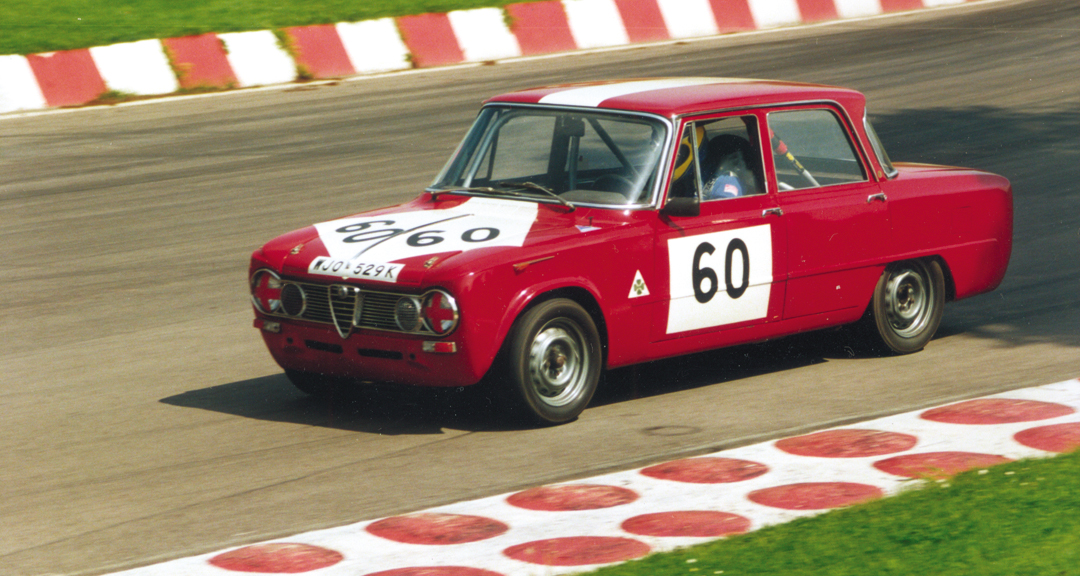
Photo: McDonough Collection
The next turns, Les Fagnes and Stavelot, are easy, and are the types of turns the Ti Super loves – medium-speed corners under full acceleration. Then it’s up to the two-part Blanchimont…challenge number three. I dab the brakes the first time and that means the car is slower through the second part as well and then slower in the run up to the Bus Stop. So every time after that, it’s a question of having the nerve and the confidence to take the first part flat in top and then hold it and not turn it too early for the second half. This is purely a matter of faith….but the Giulia loved it, and went into the Bus Stop three seconds quicker as a result. With confidence high, the Bus Stop is just a minor irritation as you fly down to La Source, staying well out to the left, whipping it into the wall and power down that hill again. Absolutely fantastic, all with an Alfa four-cylinder symphony playing in the background. If eight laps is good, eight hours must be heaven.
Buying and Owning a Giulia Ti Super
There are two ways of approaching this. One is to search Europe for an original genuine Ti Super, which will take time. If you are incredibly lucky, you may find one that never raced and has been well looked after. That’s not too likely. The other way is to go to the racers and buy one already prepared. Now many of these are not really proper Ti Supers, as many “ordinary” Ti road versions were converted as the racers started to wear out. But if they were well put together, they get FIA papers; and if you are going to race one, then good preparation is the important issue. You aren’t really going to buy one for the road. Plan on spending anything from $5,000-20,000 depending on condition and history.
The good thing is that lots of these cars are racing and there are plenty of parts. There are also many people who know how to prepare them, both in Europe and the USA, and the many international Alfa Romeo clubs have numerous helpful experts. For what you spend, you are going to have a lot of fun, especially if you go the endurance route.
Specifications
Examples Built: 501
Weight: 2320 lbs
Wheelbase: 98.82”
Track: Front: 51.6”. Rear: 50”
Suspension: Front: Independent, with wishbones, coil springs and telescopic dampers. Rear: Live axle
Engine: 4 cylinder in line, dohc
Valves: 2 per cylinder
Displacement: 1570-cc
Bore x Stroke: 78 x 82 mm
Carburetion: Twin sidedraft Weber carburetors
Compression Ratio: 9.7:1
Horespower: 112 bhp @ 6500 rpm, 170 bhp tuned
Transmission: 5-speed and reverse
Brakes: 4-wheel disc brakes
Wheels: 15” x 4.5”
Tires: 155 x 15
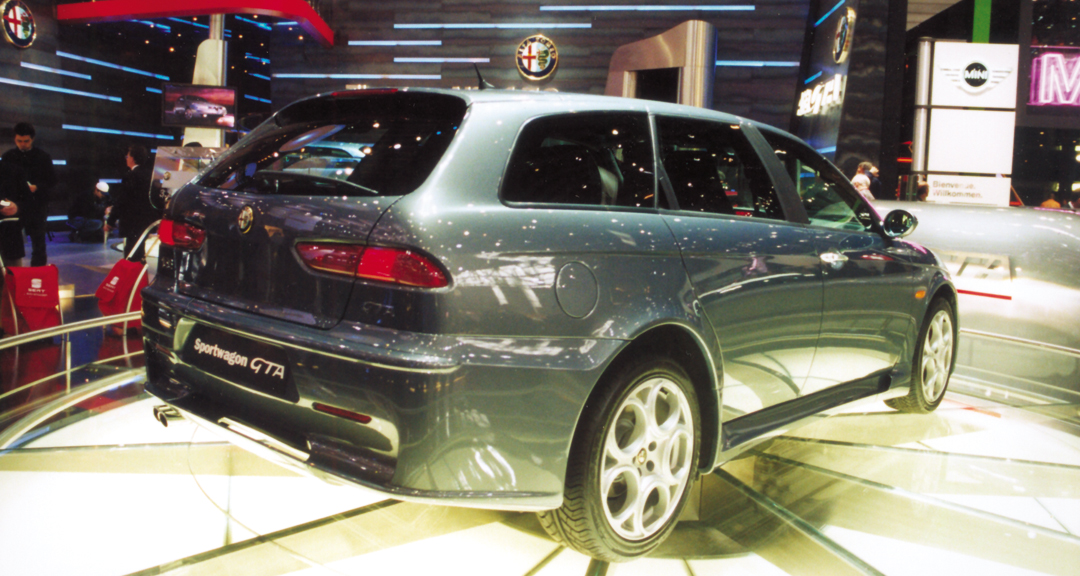
D’Amico, S. and M.Tabucchi
Alfa Romeo Production Cars 1996, Giorgio Nada, Milan, Italy
Fusi, L.
Alfa Romeo-All Cars From 1910 1978, Emmeti Grafica, Milan, Italy
Savill, C.
Giulia Ti Super Racing Pedigree, Alfa Romeo Owners Club Magazine, V.35, No.2, 2001


